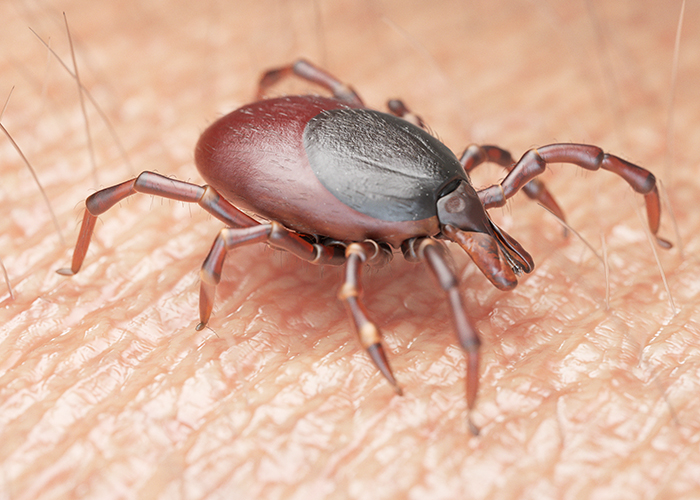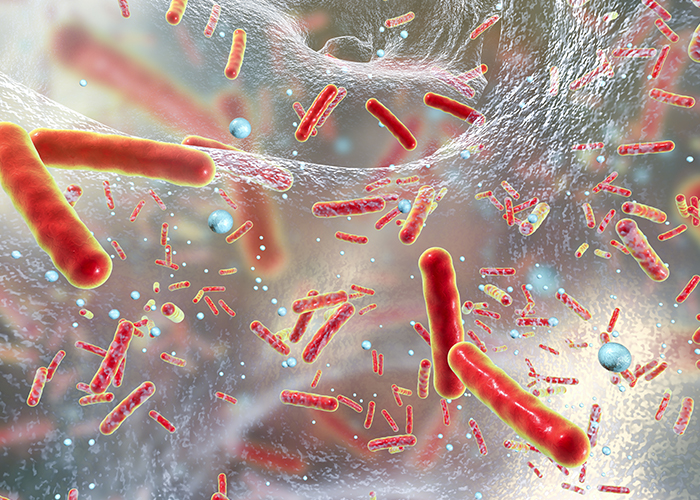Diagnosis and Therapy of Lyme Disease
Careful diagnosis determines suspected Lyme Disease
Asking (anamnesis) the patient is extremely important because it ultimately determines whether or not there is a suspicion of Lyme disease. First symptoms such as, for example, the mottled (erythema migrans) are so typical that they are sufficient for a diagnosis. If the medical history is consistent with Lyme disease, treatment should even be given if the usual laboratory disease levels are negative.
In addition to the tick bite, general "flu-like" symptoms, such as headache or limb pain only, require further investigation for the diagnosis or ruling out of Lyme disease.

Questionnaires (Lyme Disease, Coinfections, Environmental Medicine, Parasitosis)
Careful study of your medical history forms the basis of my diagnostics. In addition to all existing findings from doctors and therapists as well as hospital discharge reports, laboratory, CT / MRI X-ray findings, this includes your self-reported medical report - even before I get to know you personally.
Depending on the illness and symptoms, we will send you specific questionnaires by e-mail in advance. Please be sure to complete them carefully and return them, filled out, before the deadline so I can get a comprehensive picture of your complaints before your first practice visit.
I allow a lot of time for our personal conversation in the practice.
Acute Lyme Disease - Laboratory Diagnosis
If you have had contact with Borrelia, your blood will have antibodies against the pathogen - but only after more than six weeks after the tick bite. Therefore, screening tests such as, for example, the enzyme-linked immunosorbent assay ELISA-Test, in the early stages of the disease are often negative. If antibodies can be detected, the so-called antigen detection is determined by the laboratory. These more complex confirmatory tests, such as the immuno-blot or the western blot, are, unfortunately, not covered by statutory health insurance.
Both tests are positive only in about 10% of cases of Lyme disease and so are only of little significance.
The LTT Borrelia Laboratory Test is the earliest possible indicator of the cell immune response (lymphocytes, monocytes). As early as the 10th day after the tick bite, this lymphocyte transformation test (LTT) with Borrelia test antigens can detect the cellular immune response of circulating immune cells (lymphocytes) to Borrelia proteins.
LTT (also IFT) is well suited as a follow-up to borreliosis therapy to assess whether the treatment is effective. After an effective treatment, the LTT Borrelia reacts predominantly negative or the immune system shows a significant decrease in the immunological examination of the pathogen.
The significance of the LTT Borrelia test is around 60-70%. The test is only covered by private funds. The Elispot Borrelia Test is also of similar significance to the LTT. These tests are often done in my practice.
Chronic Lyme Disease - Laboratory Diagnosis

- LTT Borrelia, Elispot Borrelia
- Immunological laboratory tests: immune status e.g. TNF alpha, IL1, IFN gamma, CD57 + NK cells.
- Laboratory examination of synovial fluid (suspected Lyme arthritis) (is procured)
- CSF (brain water examination) in suspected neuroborreliosis (is procured)
Naturopathic Borreliosis Diagnostics
My personal diagnostic method using test ampoules allows me not only to diagnose the Borrelia strain, but also the strength of the infection and the frequently found co-infections (parasites, EBV viruses, CMV viruses, Rickettsia, fungi, etc.). It also allows me to find the most effective and tolerable antibiotic as well as herbal and homeopathic medicines for your condition.
My 5-pillar Borreliosis Therapy
Lyme disease is a multi-system disease that must, therefore, be addressed in a multi-system way!
My experience shows that the treatment of your Lyme disease must not only be purely antibiotic, but also a combination therapy of 5 different pillars:
Antibiotic
Individual, depending on the therapy used, as a short-term therapy ("shock therapy"). Examples: clarithromycin, minocycline, azithromycin, tinidazole, more rarely doxycyline (still recommended as standard!).
After the first cycle, I do an LTT-Borrelia / Elispot control test to assess the course and success of therapy.

In addition:
2.Herbal preparations and tinctures
Samento and Banderol are medicinal plants from South America that are also recommended in conventional medicine because they are very effective, not only against Borrelia, but also against co-infections such as bacteria, viruses, parasites and fungi (Prof. Eva Sapi, USA). Info: Samento, Banderol and also Takuna, Cumanda, Houttuynia are part of the famous Cowden programme.
Depending on the disease symptoms, I also recommend tinctures such as angelica, card and also combination tinctures.
In addition:
3.Homeopathic Lyme Disease
I prescribe the IST (Immune System Test Setup) Tick Complex Preparations by Dr. med. Fonk as an excellent and gentle therapy supplement.
Immune Defense Strengthening
- Nutrients, minerals (according to laboratory),
- Naturopathic procedures (interval hyperoxia-hypoxia therapy, ozone, cupping, colon hydrotherapy)
- Life coaching, finding and resolving emotionally stressful conflicts (using PSE, psychosomatic energetics)
Bowel Support
This should be run in parallel and at the beginning of the worming cure. I recommend taking prebiotics, probiotics, plant digestive enzymes, intestinal vitamins, amino acids and trace elements. A short-term avoidance of cereals, dairy products and eggs is very important in my opinion.

So that your body can recover, I recommend supportive therapies.
These are divided into two areas:
Phase I – Purifying the Environment and Stimulating Detoxification
- Colon hydrotherapy (CHT)
- Nutrition consultation based on a nutritional analysis
- F.X. Mayr cure (fasting)
- Complete dental area restoration (at a biological dentist)
- Chelation therapy (heavy metal removal)
- Procaine infusion (pain therapy)
Phase II – Recovery and Rebuilding of the Body
- Infusion therapy with procaine, vitamins, minerals, trace elements, amino acids
- supplements including infusion therapy
- Interval hypoxia-hyperoxia therapy ("altitude training") with Cellgym
- Psychosomatic therapy (there are also "emotional parasites" at work in the family)
For you at home:
General useful and complementary recommendations to activate your metabolism:
Skin:
- Infrared / bio sauna (sweating at 40 degrees) 1-2 times a week.
- Sodium bicarbonate baths (foot bath, full bath).
- Brush massage
- Kneipp shower
Lungs:
- Daily active exercise, fresh air, respiratory therapy (App: "Vagusfit").
Bowel:
- In the event of constipation, Glauber's salt or Epsom salt 1-2 teaspoons / day, enemas
Liver:
- Go to bed with a hot water bottle (no heating pad!) on the stomach!
- NO alcohol during the cure!
- Possible aids: milk thistle (capsule / tea), Hepar-Pasc or similar.
Kidneys:
- Good quality, not only good tasting, water, 2 litres per day (examples: St. Leonard, Lauretana, Plose), preferably from glass bottles.
- Good alternative: reverse osmosis filter system.
- Possible aids: Kidney tea, Solidago, Juniperus or similar.
Your smartphone:
- Do not wear on the body (next to organs such as the heart, liver, prostate, uterus, bladder, etc.), or use it as an alarm clock on the bedside table!
- "Smartphone fast", at least at the weekend!
Sugar/carbohydrates:
- We live in a "sugar world". Immediately replace sugar with a healthy sugar substitute, without carbohydrates: birch sugar (xylitol, erythritol), coconut blossom sugar.

